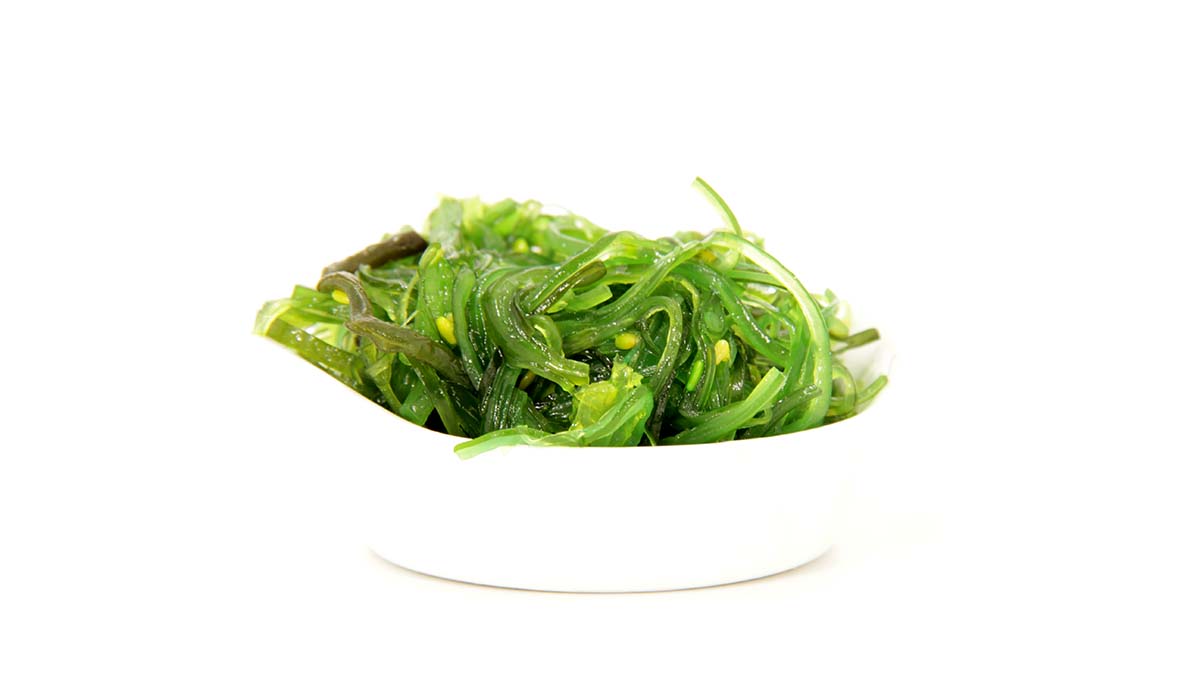By Henry S. Parker
When people think of seaweed, they don’t usually think of toothpaste. Or ice cream, yogurt, and shampoo. But these products often contain seaweed, as do puddings, salad dressings, chocolate milk, cosmetics, paints, medicinal products, and explosives. Even beer—as a clarifier to offset haziness. Salud!
Seaweed for Dinner?
Mostly, seaweed is eaten, mainly by humans and primarily in Asia. Consumers like the taste and texture and appreciate the nutritional value—many species are chock full of vitamins, minerals, and healthful omega-3 fatty acids. Japanese households serve up multiple species including nori, a dark purple variety also known as laver (scientific name Porphyra). Koreans call the same food gim. Dried into thin delicate sheets, nori is a soup ingredient and the wrap for the rice ball in sushi. Welsh families turn fresh Porphyra into laverbread, serve it in salad and with roasted meats, and eat it for breakfast, perhaps with bacon drippings or cockles, or, pureed, as an oatmeal additive.
In Japan, Korea, and China, various brown kelps, including kombu, haidai, and wakame, are popular sea vegetables. Filipinos add fresh “sea grapes,” a green seaweed, to salads. Residents of Maine, eastern Canada, and the British Isles boil up a red seaweed known as Irish Moss to make the traditional vanilla-flavored pudding, blancmange. They also prize another red seaweed, dulse. Dried, it makes a nice cocktail snack—and helps work up a thirst for a seaweed-clarified beer.
What is Seaweed?
Broadly speaking, seaweeds are multi-celled aquatic plants that, unlike sea grasses, lack roots and true leaves. Better known as macroalgae, they’re found wherever there is water and light, in salt and fresh water, from ice-bound polar regions to the steaming tropics. Harking back to the origin of life on earth, they comprise over 3,500 species organized into three broad groups based on pigmentation: reds, greens, and browns. They’re prolific, cloning themselves from broken fragments or reproducing sexually by discharging sperm and eggs (with or without a partner) that develop into tiny seaweed embryos. Sometimes the embryo matures as an alternate life form that, in turn, produces spores that grow into the recognizable variety. Complicated sex? Nothing new there.
Farming and Uses of Seaweed
Many regions farm seaweed to satisfy demand. In Japan, nori has been farm-raised for centuries. Production exploded after the British scientist, Kathleen Drew-Baker, deciphered the complex life history of Porphyra in the 1940s, paving the way for efficient cultivation. Though she never set foot in Japan, the Japanese erected a statue in her honor.
Today, over ninety percent of commercial seaweeds are sustainably farmed, four-fifths for human food. The global seaweed industry is worth $10-15 billion annually. Other important products include the seaweed extracts, algin, agar, and carrageenan. These vegetable gums act as gelling agents, stabilizers, thickeners, and emulsifiers for food, pharmaceutical, and industrial products (yes, including toothpaste). There’s evidence that bioactive compounds in some edible seaweeds mayprotect against the COVID-19 coronavirus. Farmers have known for centuries that seaweeds are an effective fertilizer and soil conditioner. Because they can strip nutrients from contaminated waters, they’re sometimes used in wastewater treatment. There is growing interest in seaweeds’ potential as a renewable biofuel.
Flatulent Cows
Some human societies can handle a substantial seaweed diet. Over time, they’ve developed the intestinal microflora to digest seaweeds’ complex carbohydrates. But, for the unconditioned human gut, a seaweed-rich diet could cause acute gastrointestinal distress.
Grazing livestock are a different story. The digestive systems of herbivorous ruminants can tolerate seaweed well. Ancient Greek texts and Icelandic sagas tell of feeding seaweed to horses, sheep, and cattle. For centuries, a breed of sheep in Scotland’s Orkney islands has subsisted almost entirely on foraged seaweed.
A livestock seaweed diet may have an added benefit — reduction of greenhouse gases. The U.S. EPA estimates that flatulent, belching livestock account for a third of human-caused methane release. Early research shows that a supplemental seaweed diet can substantially reduce cattle methane emissions without affecting weight gain.
Seaweeds and the Chesapeake Bay
In the Chesapeake Bay seaweed is sometimes a problem. Nutrient enrichment may trigger oxygen-depleting, sometimes toxic algal blooms. This suggests an enticing prospect. Could the managed production of selected species help sequester excess nutrients while simultaneously producing a valuable crop? That’s worth investigating. Any interested entrepreneurs out there?
Henry (“Hank”) Parker is a scientist and writer who previously lived in Annapolis but now lives in Vermont.

Let's keep in touch!
Keep up with the latest OutLook by the Bay information by signing up here. We promise not to waste your time.


